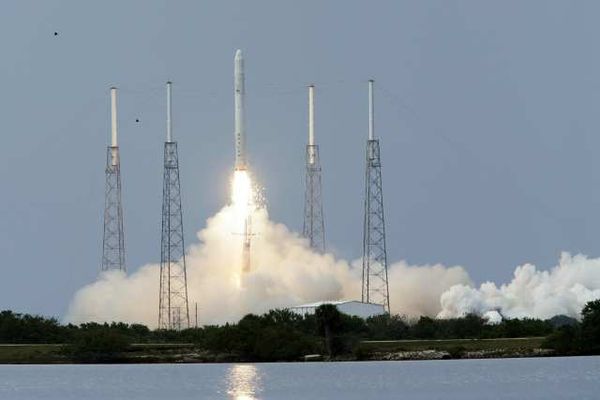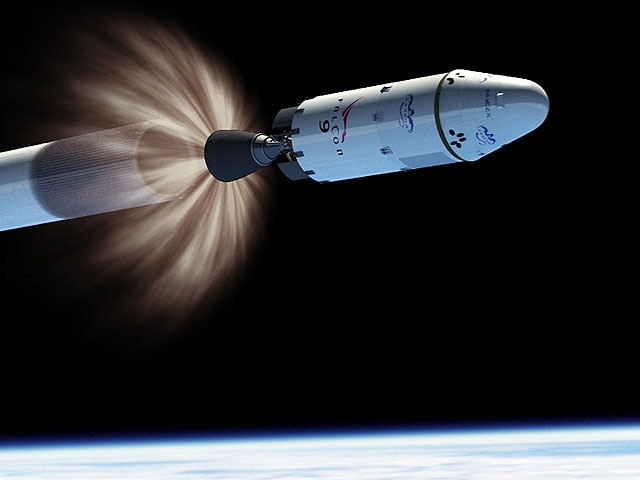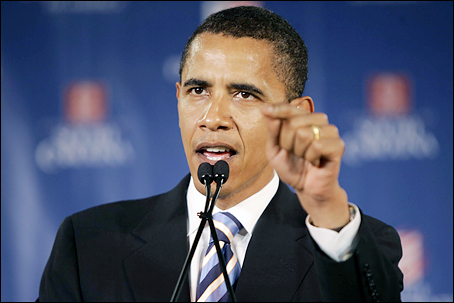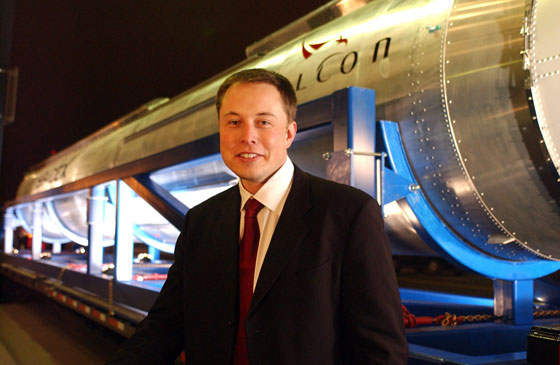
At approximately 10:43 a.m. ET the company's Dragon capsule launched from the U.S. National Aeronautics and Space Administration's (NASA) Kennedy Space Center, aboard a two-stage Falcon 9 rocket. The stages performed flawlessly.
The launch began with the first stage's nine powerful Merlin 1C engines roaring to life. As they died, the first stage dropped as planned, and the rocket soared through the upper atmosphere. The second stage, which employs Merlin Vacuum engine, then began firing, propelling the rocket towards orbit. The second stage then successfully separated, and the protective capsule cone fell away just as planned.
The only remaining objective is to test the capsule's heat shield for a successful reentry into the Earth's atmosphere.
A Victory for Elon Musk and President Obama
The success thus far is a great validation for both U.S. President Barack Obama and SpaceX CEO Elon Musk. Both men took great risks to push the idea of commercial spaceflight from daydreams to reality.

Mr. Musk, a flashy billionaire who made his fortune co-founding PayPal, lives much like his comic book equivalent Tony Stark (aka Iron Man) whose movie he appeared in earlier this year (in fact Iron Man director Jon Favreau cites musk as the inspiration for Robert Downy Jr.'s take on Stark). Mr. Musk turns notions of lackadaisical fortune barons on their head, betting on outlandish endeavors and working slavishly to see them to success.
Mr. Musk co-founded Tesla Motors, America's first new major automaker in 54 years. He spent $400M USD of his fortune to advance SpaceX to its current point of success. The entrepreneur serves as CEO for both companies, frequently spending 100+ hours a week on his duties. He was on hand personally supervising the launch, of course.
Much like with Tesla Motors, many sneered at Mr. Musk's claims -- and some still do. Mr. Musk claims that by the end of 2011, SpaceX will be delivering cargo to the International Space Station and within three years his company will be able to deliver astronauts to it at a cost $30M USD per astronaut less than his sole competitor -- the Russian Federal Space Agency. Many doubt he will succeed.
But for all that doubt SpaceX was the first company to launch a commercial rocket into low Earth orbit, and the only company in world history to launch a satellite aboard a commercial rocket. SpaceX did what aerospace giants like Boeing could not -- develop a financially feasible launch vehicle.
SpaceX has secured a number of large launch contracts from corporations and the U.S. government already thanks to that success. So it might be folly to bet against its next objective -- to become the first commercial entity to put astronauts in space.
The success is also a win for U.S. President Barack Obama. Facing a large budget deficit, thanks in part to his expensive stimulus measures, President Obama made the painful decision of cutting back on NASA funding, deciding to turn to commercial companies like SpaceX and rival startup Orbital Sciences to provide its transportation needs.
That was a huge risk. While past Presidents and members of Congress had long talked about offloading launch duties to commercial entities, no one had been able to do it. President Obama's critics were quick to blast the plan, labeling it the end of spaceflight.

What's Next?
As mentioned the capsule still has to complete a low-Earth orbit (LEO) and successfully touch down.
Assuming success, the rocket should begin ferrying cargo to the ISS later next year. It will have a capacity of 6,000 kg, with a return cargo capacity of 3,000 kg. The average cost per flight will be under $5,360 USD/kg. The previous cheapest launch vehicle [PDF] was Russia's Rockot, a converted ICBM, which delivered cargo for $7,297 USD/kg (the Russian Sh'til was also rumored to be very cheap, but its launch was subsidized at an undisclosed rate by the Russian Navy, rendering valid comparison impossible). The U.S. Space Shuttle, the primary U.S. workhorse, had costs of around $10,400 USD/kg.
Then in 2013 it is expected to carry astronauts to the ISS for the first time. The passenger variant of the Dragon capsule can carry up to seven people, or a mix of crew and cargo. It will be competing with Boeing, who also designing a passenger spacecraft.
Given its reasonable launch costs, it would be surprising if SpaceX didn't jump into the burgeoning space tourism business. Currently Richard Branson's Virgin Galactic enjoys reign over this sector, but his Spaceships One & Two reaches only 100 km -- which while the "edge of space" isn't true low earth orbit. LEO begins at around 160 km. SpaceX would likely offer a pricier, but more impressive tour of space.
And it may be overly forward looking, but it would not be surprising to see SpaceX compete for contracts to send astronauts or potentially colonies to the Moon or Mars. After all, as the U.S. showed, the critical advance is being able to put astronauts in space. Once you've accomplished that, the sky's the limit.




is proudly South African